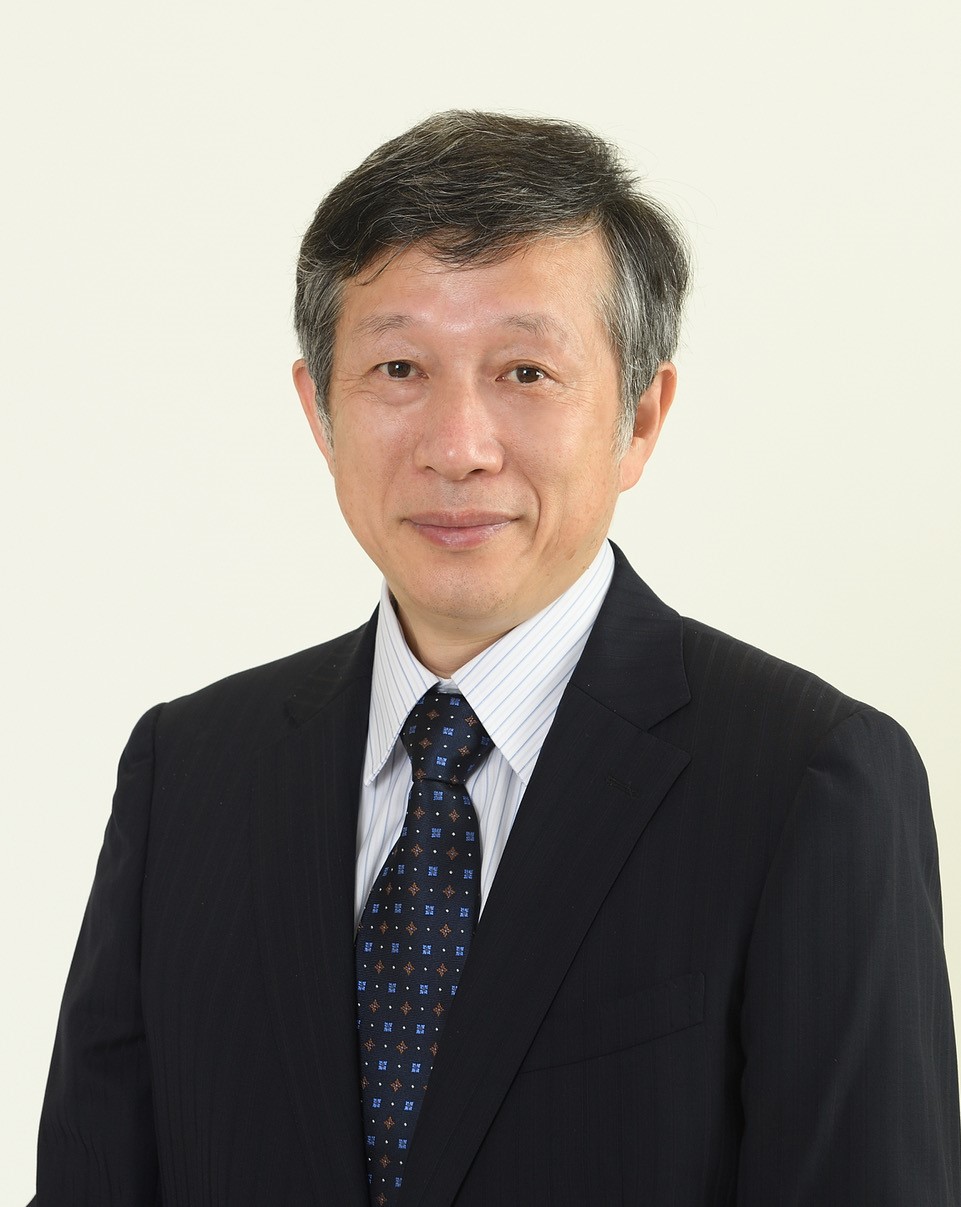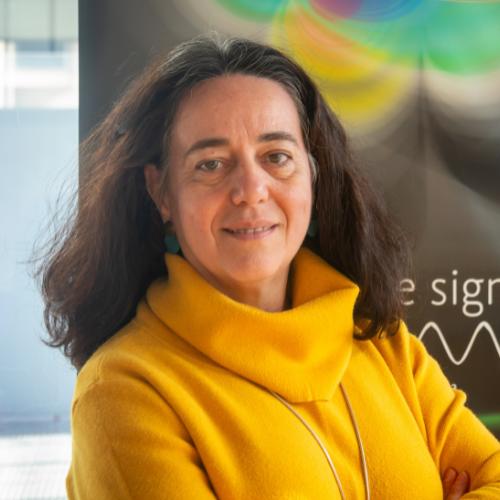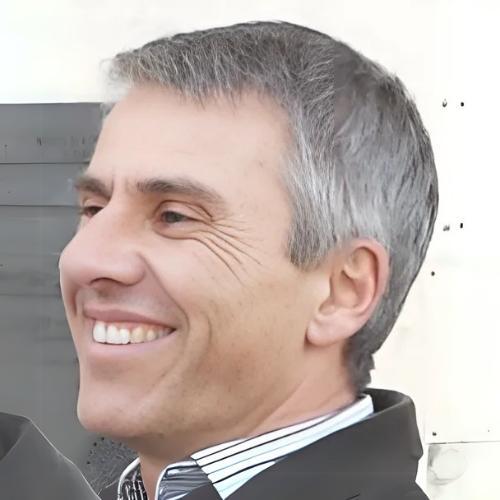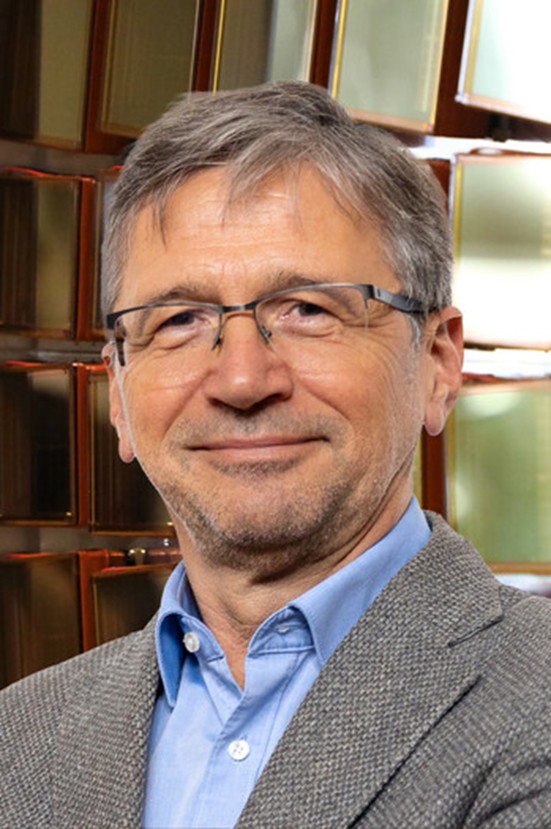KEYNOTES
|
Yolanda Benito
CIEMAT, Madrid, Spain
Sustainability in Scientific Infrastructures |
 |
Abstract: Large scientific infrastructures must integrate sustainability into their strategies, therefore including detailed plans to reduce their environmental impact.
Reducing the environmental impact generated by research is an aim already reflected as main objective of major current scientific projects. Scientific infrastructures have to deal with the following challenges related with sustainability and life cycle evaluation: minimizing the environmental impact; pursuing actions and technologies aimed at saving energy and its reuse and identifying and developing technologies that can contribute to mitigate society’s impact on the environment, among others.
The reduction of environmental impact and the promotion of sustainable development are two of the key factors that are considered in the evaluation process for future infrastructures and research projects. For years, the term environment was associated only with nature and preservation of ecosystems. However, this definition has recently been expanded to encompass urban landscapes and socio-economic aspects accompanying them. It is mandatory that the scientific community take a more global approach when planning the future of research.
When planning and operating a scientific-technical facility, it is critical to consider a sustainable design in accordance with regulatory compliance and international standards, the management of resource consumption, the minimization of impacts, define a sustainable operation, assess its contribution to the environmental conservation, promote the participation of the community, guarantee transparency and consider climate change adaptation measures. The integration of these aspects not only reduces the environmental impact of the facilities but also reinforces their reputation as responsible and sustainable projects.
Bio: PhD in Chemical Sciences, Master Degree in Leadership and Public Management. General Director of CIEMAT (Center for Energy, Environment and Technology Research) since May 2022. Deputy General Director for Environment at CIEMAT (2012-2022). Head of the Public Private Partnerships Unit at the Ministry of Science and Innovation (2008-2012). Main highlight during this period: design and implementation of instruments to strengthen research and innovation for Public-Private Cooperation to develop innovative public procurement and coordinate research and innovation activities with regional governments. Chief of the Unit of Energy and Environmental technologies at CIEMAT; involved in several International and National R&D+I projects devoted to applications and technologies related with the energy and environment. Member of European and National Scientific Committees and Alliances, author of chapters of books, papers in scientific journals (SCI); wide participation in national and international symposia. Vicepresident of ENRESA, the Spanish Public company for nuclear waste management.
|
Tadayuki Takahashi
Kavli Institute for the Physics and Mathematics of the Universe (Kavli IPMU), The University of Tokyo, Japan
Toward New Frontiers: Deploying State-of-the-Art Astronomical X-ray and Gamma-ray Detectors into Interdisciplinary Fields |
 |
Abstract: Research aimed at addressing profound scientific questions about the universe has driven the development of cutting-edge detectors with exceptional performance, achieved through an unwavering pursuit of sensitivity and resolution. We have successfully applied technologies originally developed for X-ray and gamma-ray space observations-including multipixel superconducting microcalorimeters, large-area CdTe semiconductor imagers, and advanced X-ray astronomical analysis techniques-to interdisciplinary fields such as atomic physics and non-destructive elemental analysis using negative muons. Furthermore, the semiconductor Compton camera, designed to revolutionize MeV gamma-ray observations, has proven remarkably effective for precise polarization measurements of X-rays from highly charged heavy ions and gamma rays from excited states of nuclei.
Beyond applications in physics, we have applied these technologies to cancer research, particularly in nuclear medicine. Key applications include visualizing pharmacokinetics to accurately predict therapeutic efficacy and potential side effects in treatments like alpha-particle radionuclide therapy, as well as facilitating the detection of microcancers.
In this talk, I will highlight examples of collaborative research with interdisciplinary partners that have not only advanced fundamental scientific studies but have also opened new frontiers in applied research, spanning a wide range of fields from elemental analysis to medicine.
Bio: Tadayuki Takahashi is a Project Professor at the Kavli Institute for the Physics and Mathematics of the Universe (Kavli IPMU) at the University of Tokyo. He is also an Emeritus Professor at the University of Tokyo and JAXA. Before joining Kavli IPMU, he was at JAXA/ISAS, where he significantly contributed to developing X-ray and gamma-ray detectors for Japanese X-ray satellites, including Suzaku and ASTRO-H (Hitomi). He has been especially successful in advancing technologies for CdTe (Cadmium Telluride) radiation detectors, including the CdTe double-sided detectors and pixel detectors. These advancements and his proposed detector concepts are foundational for modern CdTe and CZT detectors. In parallel with research in high-energy astrophysics, he leads interdisciplinary research initiatives at Kavli IPMU, leveraging advanced detector technologies across diverse fields, such as atomic physics, nuclear physics, element analysis, and urgent research topics of medicine, such as cancer research. In 2017, he was awarded the IEEE NPSS Glenn F. Knoll Radiation Instrumentation Outstanding Achievement Award for contributions to the development of CdTe semiconductor devices and their applications to high-energy space astrophysics. He is an accomplished author and co-author of over 500 publications.
|
Alicia M. Sintes
Institute of Applied Computing & Community Code (IAC3), University of the Balearic Islands, Spain
Gravitational waves with ground-based detectors |
 |
Abstract: In this talk, I will provide an overview of the history of LIGO and Virgo, focusing on key advancements in precision measurement and the challenges faced by these kilometer-scale interferometers that make gravitational-wave detections possible. I will summarize the latest results from the LIGO-Virgo-KAGRA detectors, starting with the groundbreaking first detection in 2015, and discuss their far-reaching implications. Additionally, I will outline the upcoming schedule and planned upgrades for the next data-taking runs. The talk will conclude with a look ahead at the future evolution of ground-based astronomy over the coming decades.
Bio: Alicia M. Sintes (Menorca 1969) holds a PhD in Physics from the University of the Balearic Islands (UIB) and is a Full Professor in the area of Theoretical Physics. Her research focuses on the field of gravitational wave astronomy. She joined the LIGO Scientific Collaboration (LSC) and GEO in 1997, and is a member of the LIGO-LSC council and the GEO executive committee, as well as a member of the LISA Consortium and the Einstein Telescope.
Sintes was named “Beloved Daughter of Sant Lluís” in 2018 and has received numerous awards, including the Ramon Llull award from the Government of the Balearic Islands, the “Sincronizados” award from the SINC Agency, and recognition as a member of the Spanish Science Selection by QUO, for her contribution to the discovery of gravitational waves. She has supervised nine doctoral theses and has published over 400 scientific articles.
Sintes has a strong track record of international leadership: she served as co-chair of the LIGO-Virgo continuous waves data analysis search group (2016-2018), as a member of the LIGO Science program committee (2019-2022) defining the scientific program of the collaboration, the LISA parameter estimation task force (2007-2010), and the GEO detector characterization working group (2001-2004). Furthermore, she has been a member of the European Space Agency’s Fundamental Physics Advisory Group (2007-2009) and of the Fundamental Physics Roadmap Advisory Team (2009-2010) developing recommendations on the Cosmic Vision program. She was a member of the G8 group of the “Red de infraestructuras de Astronomía” (2007-2009) and of the “Red de Interlocutores Universitarios” for the “7th Programa Marco, grupo de Seguridad y Espacio, del Servicio Europa I+D de la CRUE” in 2006. She has also been a member of the board of directors of the “Sociedad Española de Gravitación”. Currently she is a member of the Committee of the International Society on General Relativity and Gravitation (2019-2028), the LIGO Data Analysis Council, and was the editor of the journal Astroparticle Physics (2018-2021).
PLENARIES
|
Bertrand Perot
CEA, DES, IRESNE Nuclear Measurement Laboratory Cadarache, France
Non-destructive nuclear measurements, from research to applications |
 |
Abstract: Non-destructive nuclear measurements are widely used in research and industry, in fields ranging from uranium exploration, nuclear reactors, process monitoring, radioactive waste characterization, nuclear accident studies, homeland security, recycling, to the final clean-up and decommissioning of nuclear facilities. Technologies like X-ray imaging, gamma-ray spectroscopy, passive neutron coincidence counting, active neutron interrogation, and neutron or photon activation analysis, are continually being improved with new radiation sources, new detectors, new electronics and new data analysis capabilities or methods. These developments are helping to meet a variety of challenges, including, but not limited to, in situ measurements in poorly controlled environments (e.g. borehole logging, nuclear decommissioning sites, old waste storage), characterization of heterogeneous radioactive waste packages with high attenuation effects, on-line process monitoring in spent nuclear fuel reprocessing, mining or recycling applications, or replacing expensive detectors with cost-effective ones. This talk will present some of these progresses, from research towards industrial applications.
Bio: Bertrand PEROT holds an Advanced Engineer Degree from the Physics Engineers School of Grenoble, France, a PhD of Grenoble University carried out at CEA in the field of active neutron measurements, and an HDR academic accreditation to supervise research activities including PhDs students. . He started his career at ORANO in the field of nuclear process monitoring for La Hague reprocessing plant, then he joined CEA Cadarache to develop non-destructive nuclear measurements in different application fields like radioactive waste characterization, homeland security, uranium mining, cleaning and dismantling nuclear facilities, or circular economy. Involved in about 10 European projects from FP6 to H2020 research programs, rewarded with various national and international awards in 2007, 2008 and 2019, he was successively appointed CEA Senior Expert, International Expert, CEA Research Director and CEA Fellow. He took part to more than 170 scientific communications, 13 patents (award of CEA Cadarache inventors in 2011), the supervision of 17 PhD theses, 2 CNAM theses, 7 young researchers (post-doc level) in the frame of European projects and 23 internships. His preferred professional commitment is to support the professional development of young students and researchers, while developing innovative measurement methods useful to society and industry.
|
Peter Križan
Faculty for Mathematics and Physics of the University of Ljubljana in Slovenia and Senior Research Associate at Joseph Stephan Institute
Novel photon detectors |
 |
Abstract: The talk will review recent advancements in photodetectors, covering vacuum-based detectors, semiconductor sensors, and gas-based detectors. The focus will be on the detection of low light levels, improved timing resolution, and expanded spectral range. Additionally, the development of photosensors designed for extreme conditions, such as operation in cryogenic environments and high radiation levels, will be discussed.
Bio: Peter Križan is a full professor at the University of Ljubljana and a senior research associate at the J. Stefan Institute. He has played key roles in international research, including at DESY, where he coordinated the HERA-B RICH detector, and at KEK, where he has been one of the leaders in the Belle II collaboration since 2008. He served as the Spokesperson of the Belle II Collaboration, Technical Coordinator, and is currently its Deputy Spokesperson. His research focuses on particle physics (with emphasis on flavour physics), detector development (Cherenkov detectors and single-photon sensors), and applications in environmental physics and medical imaging. He has received major recognitions, including the ERC Advanced and Proof-of-Concept Grants, and Slovenia’s Zois award. In 2023, he became a regular member of the Slovenian Academy of Sciences and Arts. He has contributed to scientific policy as the Chair of the Scientific Council of the Slovenian Research Agency. He has served on numerous international advisory committees, including those at CERN (LHCC) and BNL (EIC DAC). Since January 2025, he is a member of the CERN’s Scientific Policy Committee.
|
José María Benlloch
Spanish National Research Council (CSIC), Spain
Advances in Medical Imaging Instrumentation |
 |
Abstract: Advances in medical imaging instrumentation have lead to significant improvements in the accuracy and sensitivity of the scanners and a reduction of the dose administered to the patients. This trend continues to be pursued by current research in the field, aligned with the advances in biology and medicine. In addition, the new technologies in diagnostic imaging that are being developed at the Institute of Instrumentation for Molecular Imaging (I3M) tend to democratize the use of medical imaging and therapy so that they can be extended to the entire world population, in line with the objectives of the World Health Organization.
Low-field magnetic resonance imaging (MRI), together with post-processing methods based on non-generative Artificial Intelligence (AI), is making it possible to obtain quality images of the human body using portable equipment with permanent magnets. Such scanners can be used for the diagnosis and screening of numerous diseases at a significantly lower cost than conventional high-field equipment.
Whole-body positron emission tomography (PET) needs to reduce its costs substantially to be used universally. However, its applications are very numerous and relevant in oncology, to predict the efficacy of treatments such as immunotherapy.
New X-ray techniques whose principle consists of measuring the small diffraction that X-rays undergo as they pass through the body (and not the absorption currently used in commercial equipment) make it possible to diagnose, for example, certain lung diseases that are not detected by conventional methods.
Finally, we have demonstrated the efficacy of photo-acoustics in the detection and follow-up of skin cancer.
Bio: José María Benlloch is a Tenured Research Scientist at CSIC, “Spanish Scientific Research Council”. He founded in 2010 the Institute for Instrumentation in Molecular Imaging (I3M) at the Technical University of Valencia. He has coordinated many EU Projects, including an Advanced Grant and a Synergy Grant. He is author of more than 700 articles (H 91), and 50 patents.
He received the 2008 Prize of the Foundation King Jaime I, “New Technologies” modality. In 2014, the Spanish National Research Prize in Engineering “Leonardo Torres Quevedo”. Elected Member of the European Academy of Sciences (2018). Elected Member of the Royal Valencian Academy of Medicine (2025).

